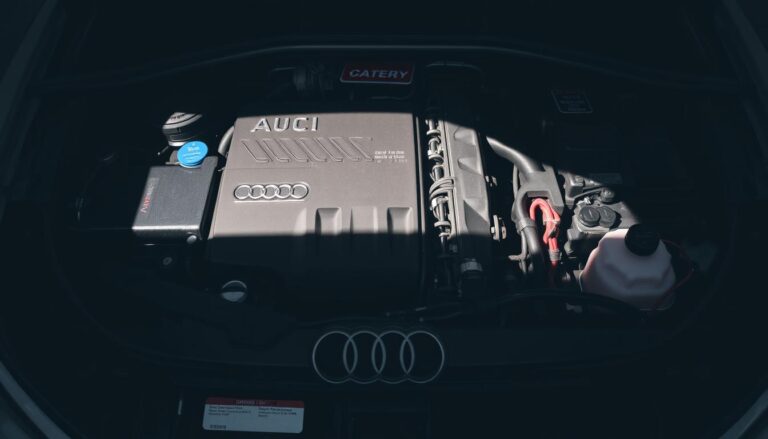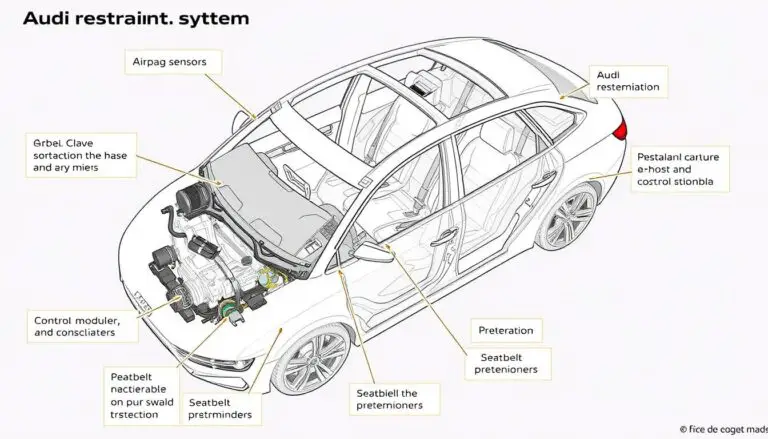The Audi TT has captivated drivers with its distinctive design and spirited performance since its debut in 1998. However, not all model years deliver the same reliability and driving experience. Before investing in this iconic sports car, it’s crucial to know which Audi TT years to avoid and which ones offer the best balance of performance and dependability.
This comprehensive guide examines the problematic model years across all three generations, detailing common mechanical issues, repair costs, and suggesting reliable alternatives. Whether you’re a first-time buyer or looking to upgrade your current TT, this information will help you make an informed decision and potentially save thousands in unexpected repairs.
Audi TT: Three Generations Overview
Evolution of the Audi TT across its three generations (2000-2023)
Since its introduction, the Audi TT has evolved through three distinct generations, each with its own character, technology, and unfortunately, potential problems:
- First Generation (Mk1, 2000-2006): The original, featuring the iconic Bauhaus-inspired design with a 1.8L turbocharged engine or 3.2L V6 option.
- Second Generation (Mk2, 2008-2015): More refined styling with improved performance, featuring 2.0L turbocharged engines and the introduction of the high-performance TTS and TT RS variants.
- Third Generation (Mk3, 2016-2023): The most technologically advanced iteration with the innovative Virtual Cockpit and enhanced performance across all models.
While each generation brought improvements, specific model years within each have demonstrated recurring issues that potential buyers should be aware of before making a purchase decision.
First Generation Audi TT (2000-2006): Years to Avoid

Problematic Years: 2000-2002
The early years of the first-generation Audi TT experienced several significant issues that make them less desirable in the used car market:
Major Problems & Estimated Repair Costs
| Issue | Symptoms | Average Repair Cost |
| Instrument Cluster Failure | Erratic gauge readings, display malfunction | $1,200-$1,500 |
| Timing Belt Failure | Engine stalling, catastrophic engine damage | $2,000-$4,500 (with engine damage) |
| Stability Control Issues | Poor handling, ESP light illumination | $800-$1,200 |
| Ignition Coil Failure | Engine misfires, rough idling | $400-$600 |
Why These Years Are Problematic
The 2000-2002 Audi TT models were subject to a major recall due to stability issues that required the addition of electronic stability control (ESC) and a rear spoiler. Additionally, these early models suffered from the typical “first production run” problems that were later addressed in subsequent model years.
The instrument cluster failure is particularly notorious in these early models, with many owners reporting complete gauge malfunctions around 60,000-80,000 miles. This issue alone can significantly impact the driving experience and safety of the vehicle.
Second Generation Audi TT (2008-2015): Years to Avoid

Problematic Year: 2008
The second generation brought significant improvements in design and performance, but the 2008 model year specifically has shown several recurring issues:
Major Problems & Estimated Repair Costs
| Issue | Symptoms | Average Repair Cost |
| DSG Transmission Failure | Jerky shifts, transmission slipping, stuck in gear | $3,500-$5,000 |
| Fuel Pump Failure | Engine stalling, difficulty starting | $800-$1,200 |
| Carbon Buildup (2.0T Engine) | Power loss, rough idle, poor fuel economy | $600-$1,000 |
| Timing Chain Tensioner Issues | Engine rattle, timing chain noise | $1,500-$3,000 |
Why This Year Is Problematic
The 2008 model year was the first of the second generation, and like many first-year models, it experienced teething problems. The DSG transmission issues are particularly concerning, with many owners reporting complete transmission failures requiring expensive replacements around 40,000-60,000 miles.
Additionally, the 2008 model was subject to a significant recall related to the fuel tank ventilation valve, affecting over 10,000 vehicles. This defect created a potential fire hazard due to fuel leakage, making it a serious safety concern.
Third Generation Audi TT (2016-2023): Years to Avoid

Problematic Year: 2016
The third generation Audi TT introduced cutting-edge technology and refined performance, but the 2016 model year has shown specific issues:
Major Problems & Estimated Repair Costs
| Issue | Symptoms | Average Repair Cost |
| Virtual Cockpit Glitches | Screen freezing, display malfunctions | $1,200-$2,000 |
| Airbag System Recalls | Airbag warning light, potential deployment issues | $800-$1,500 (if not covered by recall) |
| Water Pump Failure | Coolant leaks, overheating | $700-$1,200 |
| Thermostat Housing Leaks | Coolant leaks, temperature fluctuations | $500-$800 |
Why This Year Is Problematic
As the first year of the third generation, the 2016 Audi TT experienced issues with its new technology features, particularly the Virtual Cockpit digital instrument cluster. Many owners reported system crashes, screen freezing, and connectivity problems that required expensive repairs or complete unit replacements.
The 2016 model was also subject to a serious airbag recall affecting the driver’s front airbag, which could potentially explode in a crash, posing a significant safety risk to occupants.
Common Problems Across All Audi TT Generations

Regardless of generation, certain issues tend to appear across multiple Audi TT model years:
Mechanical Issues
- Oil Consumption: Many TT engines, particularly the 2.0T, consume oil at higher-than-normal rates, requiring frequent top-ups.
- Timing Chain Tensioner: A common failure point that can lead to catastrophic engine damage if not addressed promptly.
- Water Pump Failure: Plastic impellers tend to break, causing overheating and potential engine damage.
- PCV Valve Issues: Failure leads to oil leaks, rough idle, and check engine lights.
Electrical Issues
- Ignition Coil Failures: Cause misfires and poor performance, particularly in the 1.8T engines.
- Window Regulator Problems: Windows may get stuck or move slowly, a common complaint across all generations.
- Instrument Cluster Failures: Display malfunctions and erratic gauge readings, especially in first-generation models.
- Infotainment Glitches: System freezes and connectivity issues in later models with advanced electronics.
Most Reliable Audi TT Years: Recommended Alternatives

Not all Audi TT model years should be avoided. These years stand out for their reliability and represent the best value in the used market:
First Generation (2005-2006)

The later years of the first generation benefited from numerous improvements and refinements:
- Resolved Stability Issues: All models now included electronic stability control and the rear spoiler as standard.
- Improved Instrument Clusters: Less prone to the failures that plagued earlier models.
- Enhanced 3.2L VR6 Option: The 250-horsepower V6 engine offered in these years provides excellent reliability and performance.
- Refined Interior: Better materials and build quality compared to early production models.
Second Generation (2012-2015)

The later years of the second generation represent the sweet spot for reliability and value:
- Resolved DSG Issues: Transmission problems were largely addressed by this point.
- Updated 2.0T Engine: Less prone to carbon buildup and timing chain issues.
- TTS and TT RS Options: The performance variants from these years offer exceptional driving experiences with good reliability.
- Improved Electronics: More reliable infotainment and electrical systems.
Third Generation (2018-2023)

After the initial teething problems, the third generation matured into a highly reliable sports car:
- Refined Virtual Cockpit: Software updates resolved most of the early glitches.
- Improved Build Quality: Later production years show better attention to detail and durability.
- Enhanced Performance Options: The TTS and TT RS models from these years offer outstanding performance with good reliability.
- Updated Technology: More reliable and user-friendly infotainment and driver assistance features.
Essential Maintenance Tips for Used Audi TT Buyers

To maximize reliability and minimize repair costs when purchasing any Audi TT, consider these essential maintenance tips:
Preventative Maintenance
- Timing Belt/Chain Service: For first-generation models, replace the timing belt every 60,000 miles. For later models, have the timing chain tensioner inspected regularly.
- Oil Changes: Use only high-quality synthetic oil and change every 5,000 miles instead of the factory-recommended 10,000 miles, especially for models known for oil consumption.
- DSG Transmission Service: For models with the DSG transmission, perform fluid and filter changes every 40,000 miles without exception.
- Carbon Cleaning: For direct-injection engines (2.0T), consider carbon cleaning service every 60,000 miles to prevent power loss and efficiency issues.
Pre-Purchase Checks
- Service History: Verify complete maintenance records, especially for timing belt/chain service and DSG transmission maintenance.
- Check for Recalls: Ensure all recall work has been completed, particularly for the stability control updates on first-generation models and airbag recalls on 2016 models.
- Scan for Codes: Have a professional perform a complete diagnostic scan to identify any hidden issues.
- Test All Electronics: Thoroughly test the instrument cluster, infotainment system, and all power accessories for proper operation.
Considering a Used Audi TT?
Don’t take chances with potential hidden problems. Our certified technicians can perform a comprehensive pre-purchase inspection to identify any issues before you buy
The Bottom Line: Making a Smart Audi TT Purchase

The Audi TT remains an iconic sports car that offers a unique blend of style, performance, and German engineering. By avoiding the problematic years—specifically 2000-2002 for the first generation, 2008 for the second generation, and 2016 for the third generation—you can significantly reduce your risk of expensive repairs and frustrating ownership experiences.
Instead, focus your search on the recommended model years: 2005-2006 for the first generation, 2012-2015 for the second generation, and 2018-2023 for the third generation. These years represent the sweet spot where design flaws were addressed, and reliability was at its peak.
Remember that regardless of model year, a thorough pre-purchase inspection and complete service history are essential when buying any used Audi TT. With proper research and due diligence, you can enjoy the thrilling driving experience of an Audi TT without the headaches of unexpected repairs.


